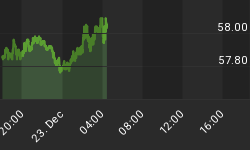Watch the Liquidity Flows levels to know where the market is going ...
We have covered this topic many times before, but still ... it hasn't changed. It is all about money.
If money flows into the stock market, it means stocks are being bought. And, when stocks are being bought, one often has to pay a higher price to get the next block of shares they want ... so the market rises. The opposite happens when money flows out.
We measure this phenomena with our Long Term Liquidity Flow indicator. When its is in Expansion, liquidity is flowing into the markets, and when in Contraction, liquidity is leaving the market.
Observe the chart below. Note how the Liquidity started to plummet on January 20th. It went straight down, and last Friday, it went into Contraction territory for the first time since April 8th. 2009.
Yesterday, there was a sizeable liquidity injection coming into the stock market which took our indicator back into Expansion territory.
Here is where you need to watch things closely. If Liquidity moves back into Contraction, then the odds will favor a market correction. If it continues to trend higher, the market will start to move back up. (The Liquidity chart can be seen daily on our Standard subscriber site in: Section 4, Charts 8-1 and 8-2.)
















